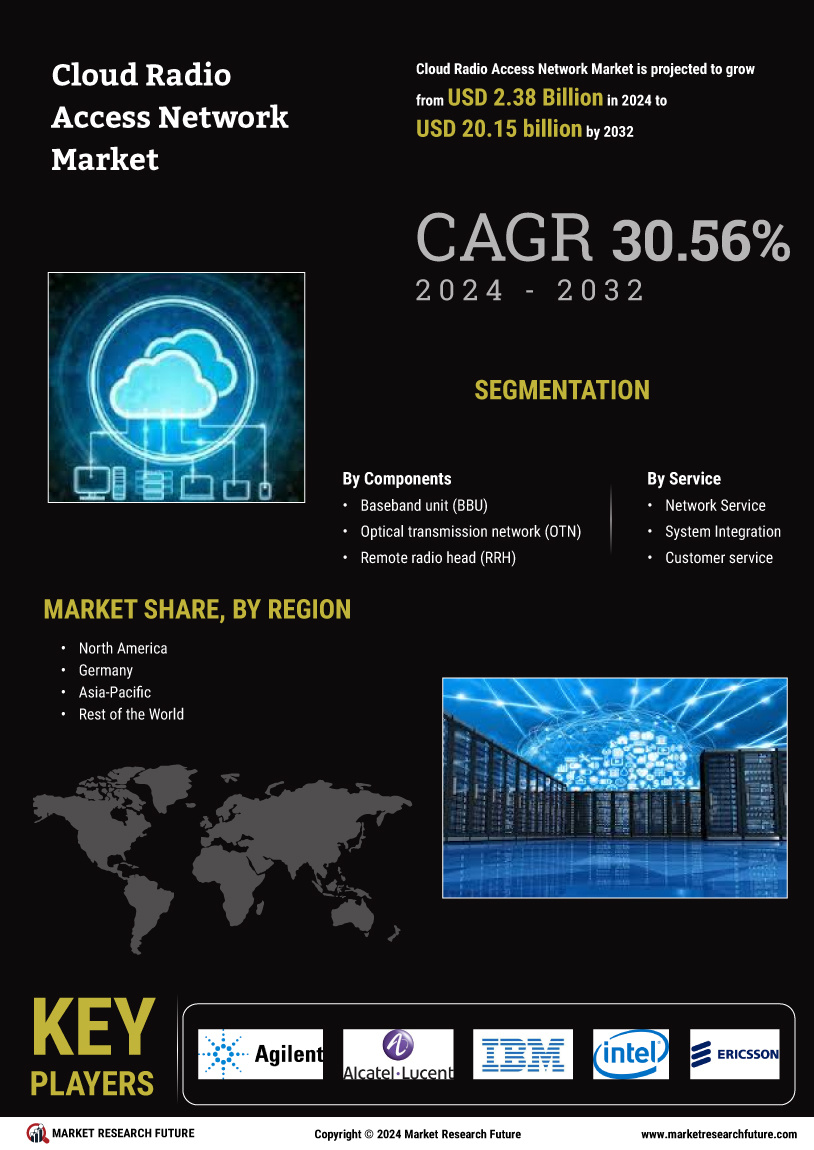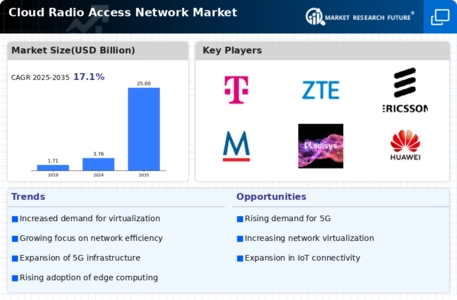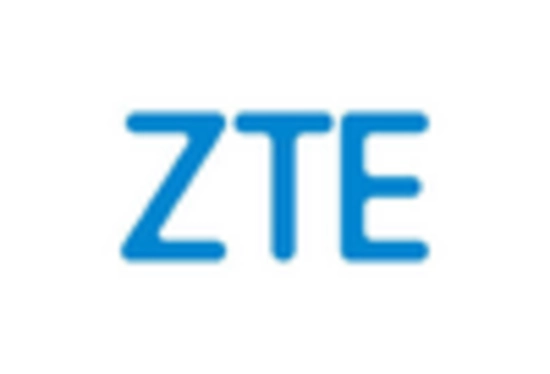The Cloud Radio Access Network Market (C-RAN) market is currently characterized by a dynamic competitive landscape, driven by the increasing demand for high-speed mobile connectivity and the ongoing transition to 5G networks. Major players such as Ericsson (SE), Nokia (FI), and Huawei (CN) are at the forefront, each adopting distinct strategies to enhance their market positioning. Ericsson (SE) emphasizes innovation through its advanced RAN solutions, while Nokia (FI) focuses on strategic partnerships to bolster its technological capabilities. Huawei (CN), despite facing geopolitical challenges, continues to invest heavily in R&D, aiming to maintain its competitive edge. Collectively, these strategies contribute to a robust competitive environment, where technological advancement and strategic collaborations are pivotal.
In terms of business tactics, companies are increasingly localizing manufacturing and optimizing supply chains to enhance operational efficiency. The market structure appears moderately fragmented, with several key players exerting substantial influence. This fragmentation allows for a diverse range of solutions and innovations, fostering a competitive atmosphere where companies must continuously adapt to maintain relevance.
In August 2025, Ericsson (SE) announced a strategic partnership with a leading telecommunications provider in Europe to deploy its latest C-RAN technology. This collaboration is expected to enhance network performance and accelerate the rollout of 5G services across the region. The strategic importance of this partnership lies in Ericsson's ability to leverage local expertise and infrastructure, thereby strengthening its foothold in a competitive market.
Similarly, in September 2025, Nokia (FI) unveiled a new cloud-native RAN solution designed to optimize network efficiency and reduce operational costs. This innovation is particularly significant as it aligns with the industry's shift towards more sustainable and cost-effective solutions. By introducing this technology, Nokia positions itself as a leader in the transition to more agile network architectures, which is crucial for meeting the demands of modern telecommunications.
In October 2025, Huawei (CN) launched a new initiative aimed at enhancing its C-RAN offerings through AI integration. This move is indicative of the growing trend towards digitalization within the telecommunications sector. By incorporating AI, Huawei seeks to improve network management and operational efficiency, potentially setting a new standard for performance in the industry.
As of October 2025, the competitive trends within the C-RAN market are increasingly defined by digitalization, sustainability, and the integration of AI technologies. Strategic alliances are becoming more prevalent, as companies recognize the need for collaboration to drive innovation and enhance service delivery. Looking ahead, it is likely that competitive differentiation will evolve, shifting from traditional price-based competition to a focus on technological innovation, supply chain reliability, and the ability to deliver tailored solutions that meet the specific needs of diverse markets.


















Leave a Comment